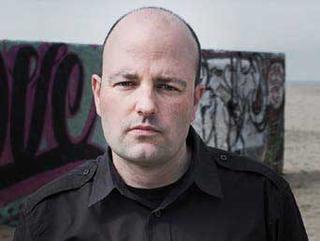Kino Flo Soft Lights Keep On Shining
NEW YORK—The production lighting landscape is very different than it was five to 10 years ago. The sheer quantity and types of lighting instruments that we have today simply didn’t exist then, or they were in their infancy. Some include lensed LEDs, remote phosphor LEDs and plasma lights. And, of course, there are still our old standbys including quartz/halogen, HMIs and fluorescent fixtures.
FLUORESCENTS FIND MANY APPLICATIONS

Jem Schofield It’s funny to say that fluorescent lighting is an old standby; when Kino Flo introduced their softlights to the industry, they literally changed the way DP’s and gaffers approached production. The instruments quickly became, and still are, a standard in television, feature films, corporate, commercial and documentary, and for good reason. They are small, lightweight, road-worthy and can produce a soft light, even before shaping.
While I’ve used almost every light fixture out there—and almost every light that Kino Flo makes—I consistently keep returning to three of their lights for my work: the DMX BarFly 200D, BarFly 450D and the Tegra 4Bank (basically a four-foot version of the legendary Diva-Lite).
As with many productions today, we mix lights from different manufacturers and use those fixtures for what we feel are their strengths. I do use LED lights (including Kino Flo’s Celeb 200 DMX light), remote phosphor fixtures and of course HMIs and hot lights when I need hard and high-output light sources. While I am definitely mixing the types of lights I use, Kino Flos are almost always part of that mix.
Among other projects such as documentary and narrative, I’ve produced a tremendous amount of educational content during the past few years, and have used the previously mentioned Kino Flo lights for a number of applications.
MULTIPURPOSE INSTRUMENTS
Get the TV Tech Newsletter
The professional video industry's #1 source for news, trends and product and tech information. Sign up below.
I use the Tegra three ways: as a main key light, to up-light frosted glass tabletops for product demonstration videos, and to cross-key for green screen and white cyc applications. I often use the BarFly 200D as a fill light and also for either back or rim lighting. It’s so lightweight that I also often travel with this light.
The BarFly 450 is used in many of my productions as a downlight over products, and with focusing honeycomb louvers to cross with the Tegra up-lighting. This eliminates shadows and creates beautiful highlights on products.
There is one other feature that I love about all of these lights. Fluorescents change color temperature when dimmed (which is desirable in certain situations). I also appreciate being able to turn individual tubes on or off when desired and keep the ones that are on full-up in terms of output to maintain consistent color temperature. For example, the BarFly 450 fixture allows you to turn off any or all four tubes so you can reduce the light output and have the light hit specific parts of the subject matter.
While I will continue to integrate new lighting technologies into my productions, Kino Flo softlight fixtures will be a part of my work well into the future. The instruments are consistent, versatile and available worldwide in every major and minor rental market.
Jem Schofield is a producer, director and educator at the C47, an online and offline resource for production-based training and information for both video production and film making. He may be contacted atjem@theC47.com.
For additional information, contact Kino Flo at 818 767-6528 or visitwww.kinoflo.com.
